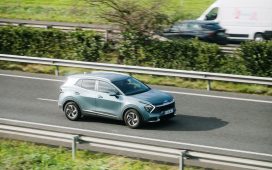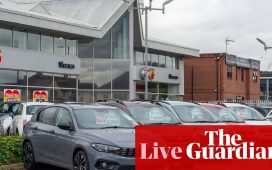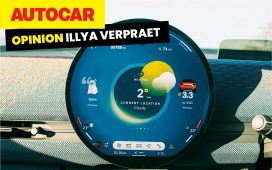-
Resident Bill McElfresh, right, expresses his views to Drew Parker of Toole Design over the large map of Marietta’s streets and features.
(Photo by Nancy Taylor)
-
Deanna Shuler, right, talks as Gina Balsamo of Carpenter Marty Transportation listens and takes notes at the map table.
(Photo by Nancy Taylor)

Resident Bill McElfresh, right, expresses his views to Drew Parker of Toole Design over the large map of Marietta’s streets and features.
(Photo by Nancy Taylor)
First, the good news Marietta City Engineer Bob Heady had for the crowd: The River Trail slip repair is nearing completion and that popular pathway should be re-opened by June.
Second, Heady told them the Thursday evening session they were attending at the Armory was going to be devoted to the City of Marietta listening to citizens’ input on “active,” or non-motorized, modes of transportation.
About 30 residents came to the session organized by two Columbus firms. Toole Design specializes in active transportation planning and design for communities nationwide and Carpenter Marty Transportation is an engineering firm dealing with transportation infrastructure.
Heady said their services were covered by planning and development funds Marietta had already received, and there was no cost to the city to stage the public input meeting.
Heady explained that there could be funding available for active transportation projects in the community, but in order to seek funding, the city first needed a comprehensive plan. Public involvement was an important part of that.

Deanna Shuler, right, talks as Gina Balsamo of Carpenter Marty Transportation listens and takes notes at the map table.
(Photo by Nancy Taylor)
“Where do you want to get to? What route do you want to take? Where are the problem areas?” Marietta City Councilman Georff Schenkel asked. “Tonight, we’re locating things. This is the time to connect the dots.”
Along with Heady and Schenkel, Dave Hendrickson and Amanda Rinehart of the engineering department, Mayor Josh Schlicher and councilmembers Brett Allphin and Mike Scales were there and talked with those attending.
Toole Design had a large map of the city on a central table, where people could place color-coded stickers at points where they wanted to talk about destinations, gaps or barriers. They also had easels with information boards that displayed various Marietta data categories, such as motorist traffic volume and bicycle accidents.
One data board in particular, which listed “Pedestrian Level of Traffic Stress” and “Bicyclist Level of Traffic Stress,” unintentionally mirrored a sampling of comments on the long-range planning board where residents could attach their own comments. A portion of the individuals’ comments reflected annoyance and uneasy encounters among motorists, bicyclists, pedestrians, wheelchair travelers and law enforcement. Some of those written comments included:
¯ Enforce existing laws. Fine cyclists on sidewalks, especially electric bike users.
¯ Warning to pedestrians on bike path near Valley Gem to stay off path.
¯ Education for motorists doesn’t include bicyclists’ rights.
¯ Illegal cell phone use by motorists barely enforced.
¯ Police have no idea. Cyclists and pedestrians are third-class citizens.
¯ (Re: Motorized wheelchair travel) Conflicting directions from different law enforcement departments. State and sheriff treat us as criminals, and we’re told to ride with traffic. Marietta says ride into traffic.
Other comments on the board did focus on long-range improvements, trouble spots, or expansion ideas, including these:
¯ Completion of trail between all historical sites, historic homes and museums.
¯ Brick streets on steep slopes – Scammel, Tupper – impossible to bike up.
¯ Par Mar (planned headquarters) intersection – might be messy, including for cars, and especially for active people (bicyclists, pedestrians, motorized wheelchairs, etc.)
¯ Long Range: Bike path, continue to Devola, to Reno, to Washington State Community College.
¯ The alleys are a great place to ride bikes. Fixing potholes would help.
¯ Connect westside trail to Washington Street Bridge. Post bike speed limits on river trail.
¯ Repairs to sidewalks to reduce the many severe tripping hazards for pedestrians.
¯ More bike racks, everywhere!
One of the long-range goals in particular seemed as if it could appeal to many in all “walks” of life and modes of transportation. It read, “Picnic and sit by the river, accessibly.”












